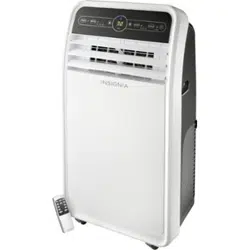Documents: Go to download!
- User Manual - (English)
- Quick Setup Guide - (French)
- Quick Setup Guide - (Spanish)
- Quick Setup Guide - (English)
- User Guide - (French)
- User Guide - (Spanish)
- Features
- Setting up your portable air conditioner
- Using your portable air conditioner
- Cleaning and maintaining your air conditioner
- Troubleshooting
Table of contents
User Guide Portable Air Conditioner
Features
- 3-in-1 design (air conditioner, fan, and dehumidifier)
- Digital controls with LED display
- Multiple fan speeds with auto-control
- Programmable timer and remote control
- Auto On/Off
Package contents
- Portable air conditioner
- Exhaust hose with adapter
- Window sealing plate assembly (window sealing plates [2], security bracket, and four screws [two type A, one type B, and one type C])
- Remote control (with two AAA batteries)
- Quick Setup Guide

Main components
Front
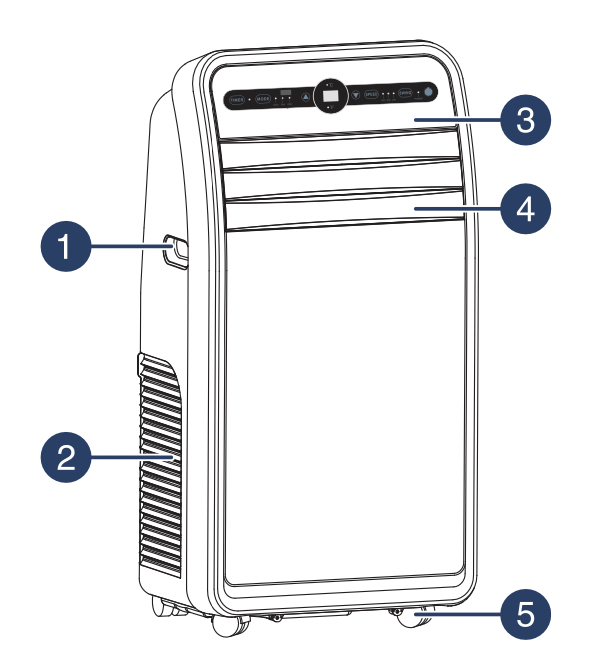

Back


Control panel
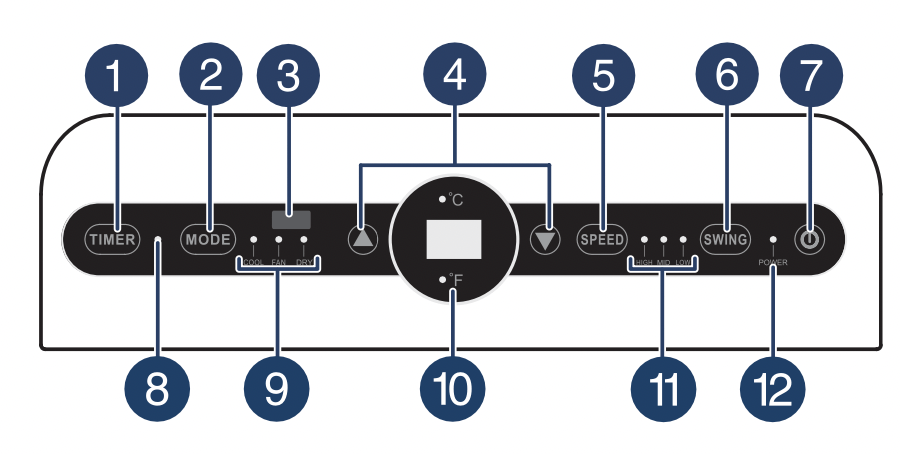

Accessories
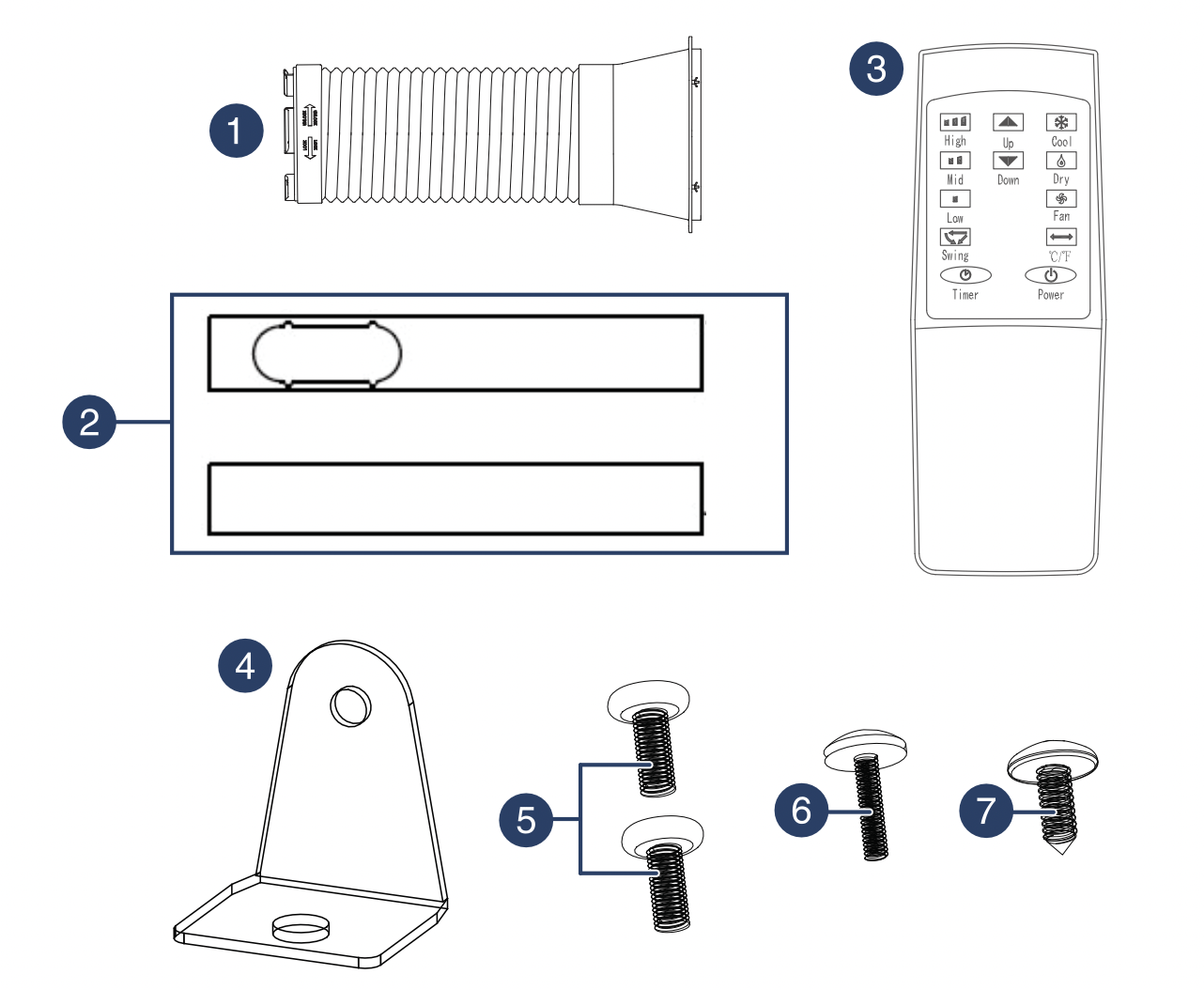
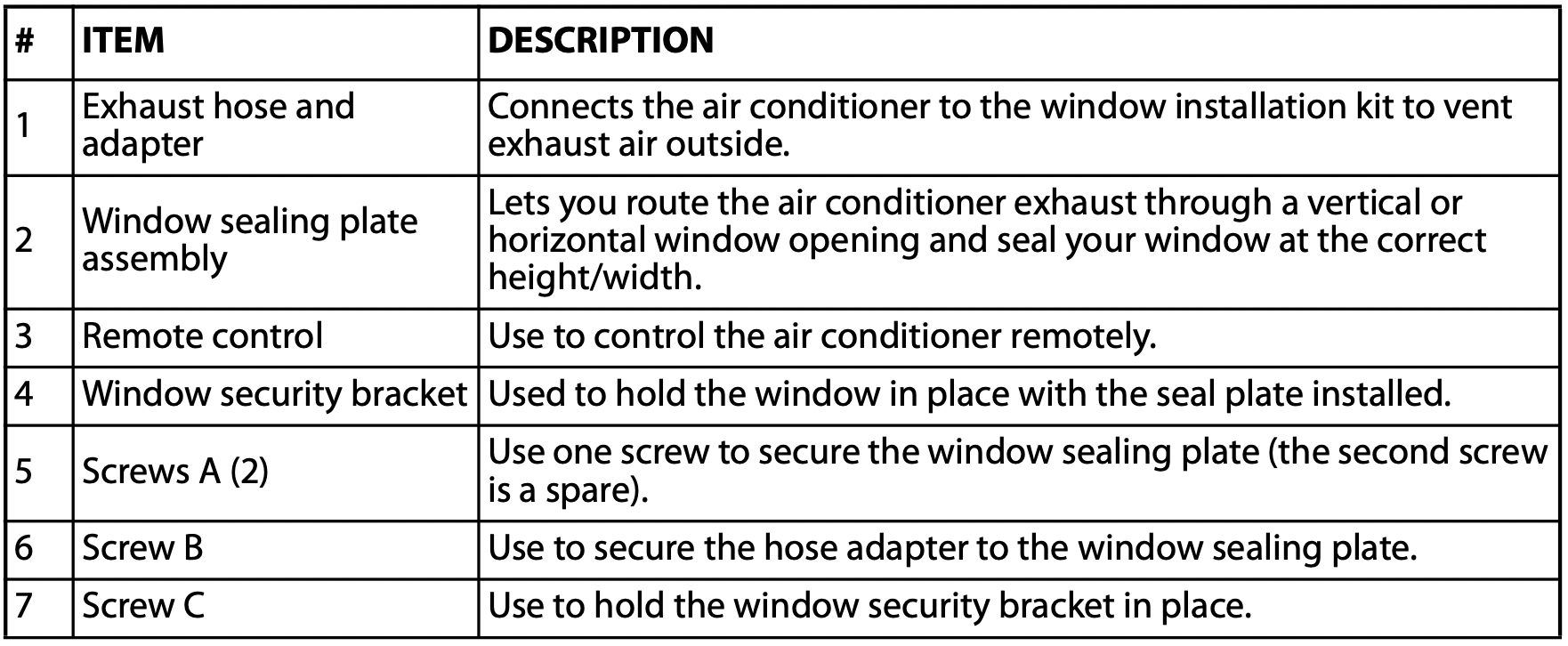
Remote control
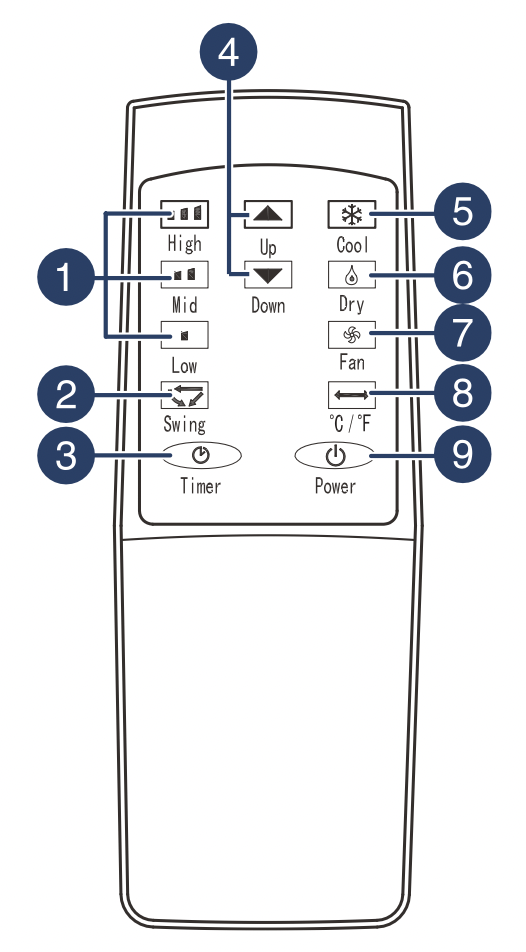
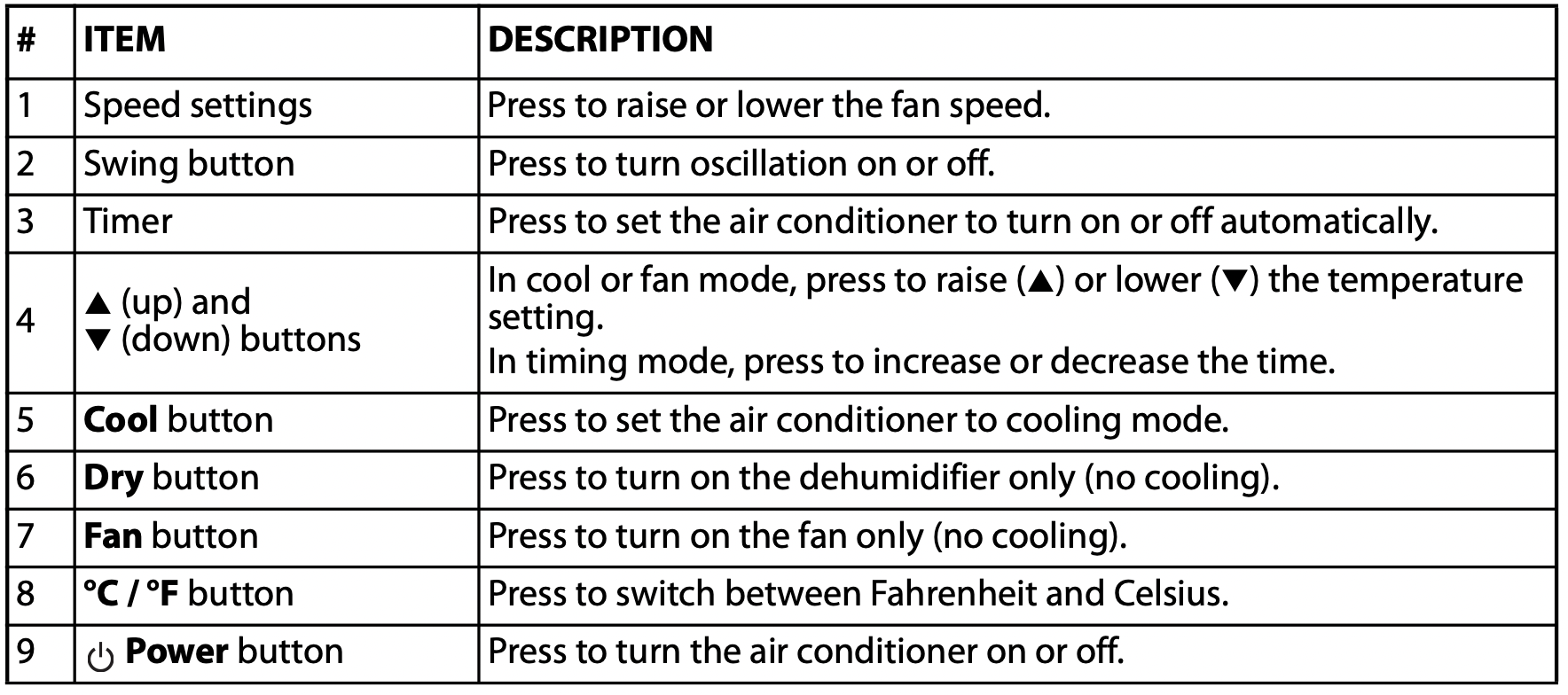
Setting up your portable air conditioner
Remove and store (optional) packing materials for reuse. Remove any shipping tape before using the air conditioner. Remove tape residue with liquid dish soap and a damp cloth. Do not use sharp tools, alcohol, thinners, or abrasive cleaners to remove adhesive, which could damage the finish.
Notes:
- Do not remain in the direct airflow from the air conditioner for extended periods.
- When used at the same time as stoves, fireplaces, or other combustion/heating devices, make sure that there is sufficient flow of fresh air into the room. Do not use in tightly closed spaces with these types of devices.
- This air conditioner is intended for household use as a consumer comfort appliance. Do not use it as a precision climate control system for the purpose of cooling precision equipment, food, pets, plants, artwork, and so on. Such items could be damaged.
- Do not bend the hose downward when the window installation kit is not being used. Doing so may cause inferior performance or failure of the air conditioner.
Placing your air conditioner
Place the unit on a flat, dry area near a window, so you can use the hose and adapter to connect the air conditioner to the window installation kit in order to vent the exhaust air outside.
To maintain good air circulation and optimum machine performance, leave a 20 in. (50 cm) space around it.

Installing your air conditioner
- Screw the exhaust hose to the exhaust outlet on the back of your air conditioner, then screw the hose adapter to the other end of the hose.
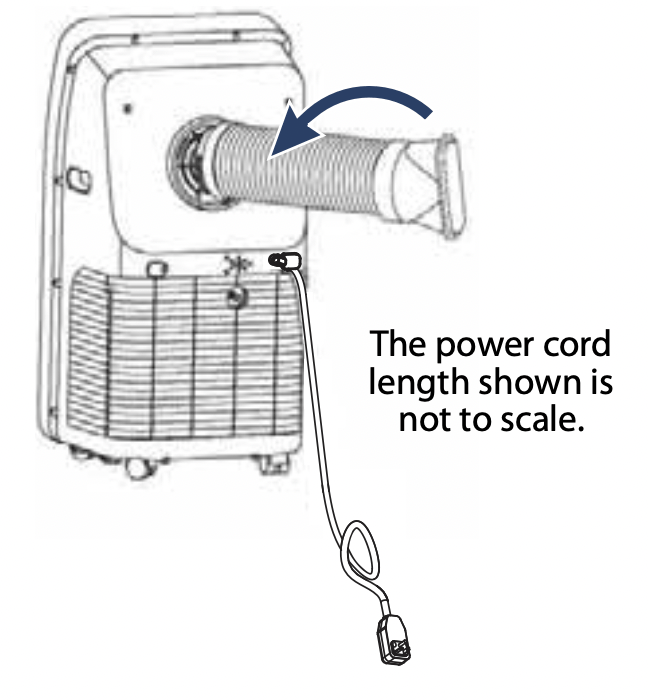
- Measure the window size.
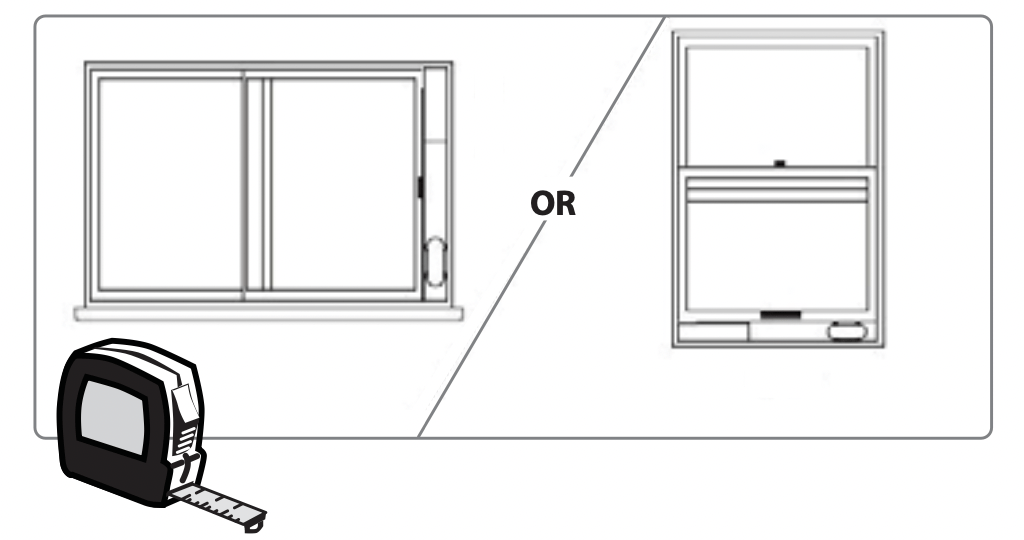
- Install the window sealing plate in the window opening, adjusting the length to fit the window opening and securing it with screw A (provided).
Note:
The window sealing kit works with casement, sliding, and vertical, double-hung windows.
You do not need to remove your window screen.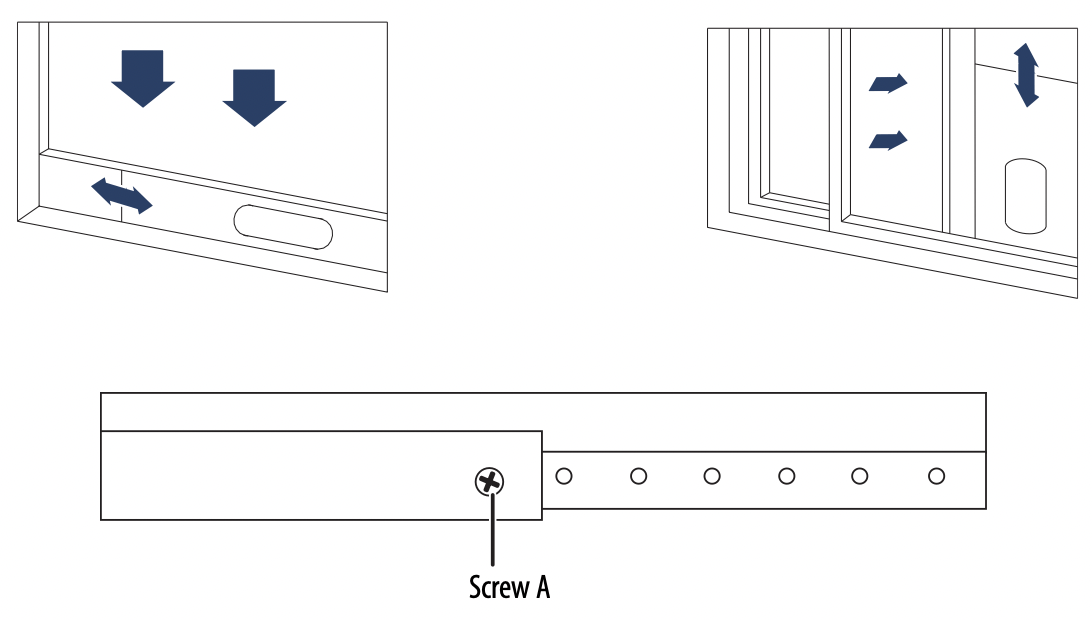
- Insert the hose adapter into the vent panel, then slide the adapter until it clicks into place.
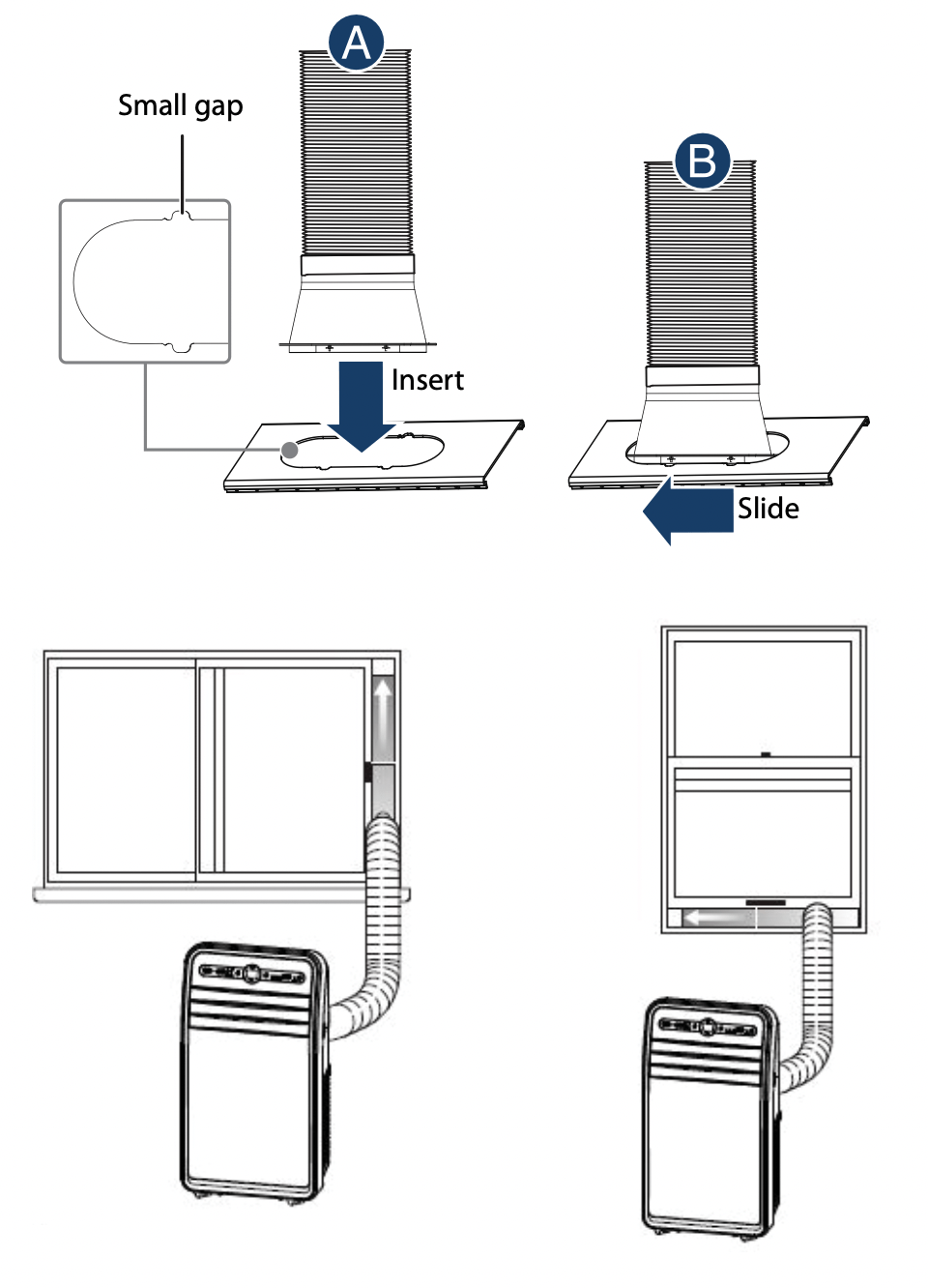
- (Optional) Secure the hose adapter to the vent panel with the type B screw (provided).
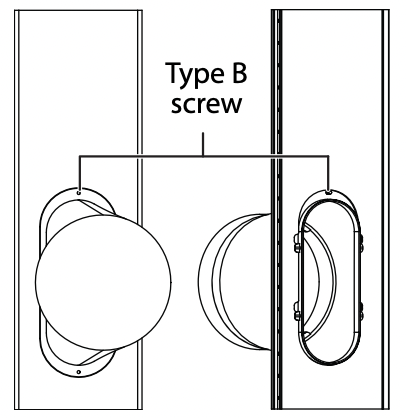
For optimum performance, do not twist the venting hose. For better efficiency, shorten the hose by squeezing its sections together.
Caution: The exhaust duct is designed especially for this air conditioner. Replacing or lengthening the duct could result in damage to your unit. - (Optional) Install the security bracket with the type C screw (provided).
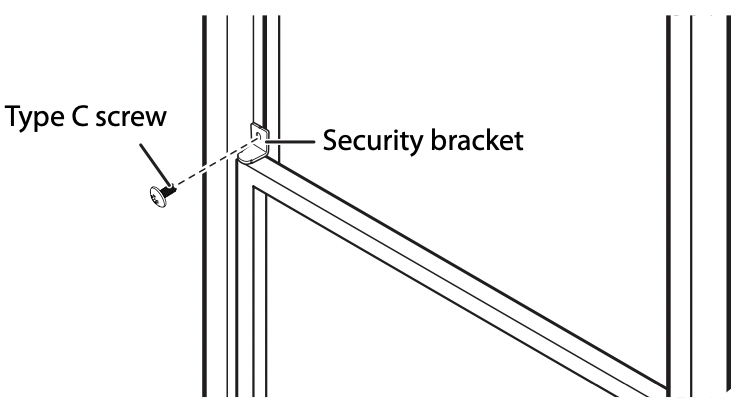
- (Optional) To set up your air conditioner to automatically drain water while using the dehumidifier, see “Automatically drain water with a hose” on page 16.
Using your portable air conditioner
Inserting the batteries in the remote control
- Press down on the arrow on the back of the remote control, then slide the battery cover from the battery compartment.

- Insert two AAA batteries (provided) into the battery compartment. Note the proper orientation of the + and – polarity of the batteries.
- Reinstall the battery compartment cover, making sure the tab locks into place.
Notes:
- Use only carbon-zinc or alkaline batteries. Do not use rechargeable batteries.
- When you replace the batteries, always replace them with new batteries. Do not mix old and new batteries.
- If your air conditioner will not be used for an extended period of time, remove the batteries from the remote control.
Cautions:
- If the fluid from inside the batteries comes into contact with your skin or clothes, wash immediately with clean water.
- Do not use the remote control if the batteries are leaking.
- If the fluid from inside the batteries gets into your mouth or eyes, flush immediately with clean water and contact a doctor for treatment.
Using the air conditioner
You can control your air conditioner by using the control panel on the front of the unit, or by using the remote control. If using the remote control, always point it at the air conditioner.
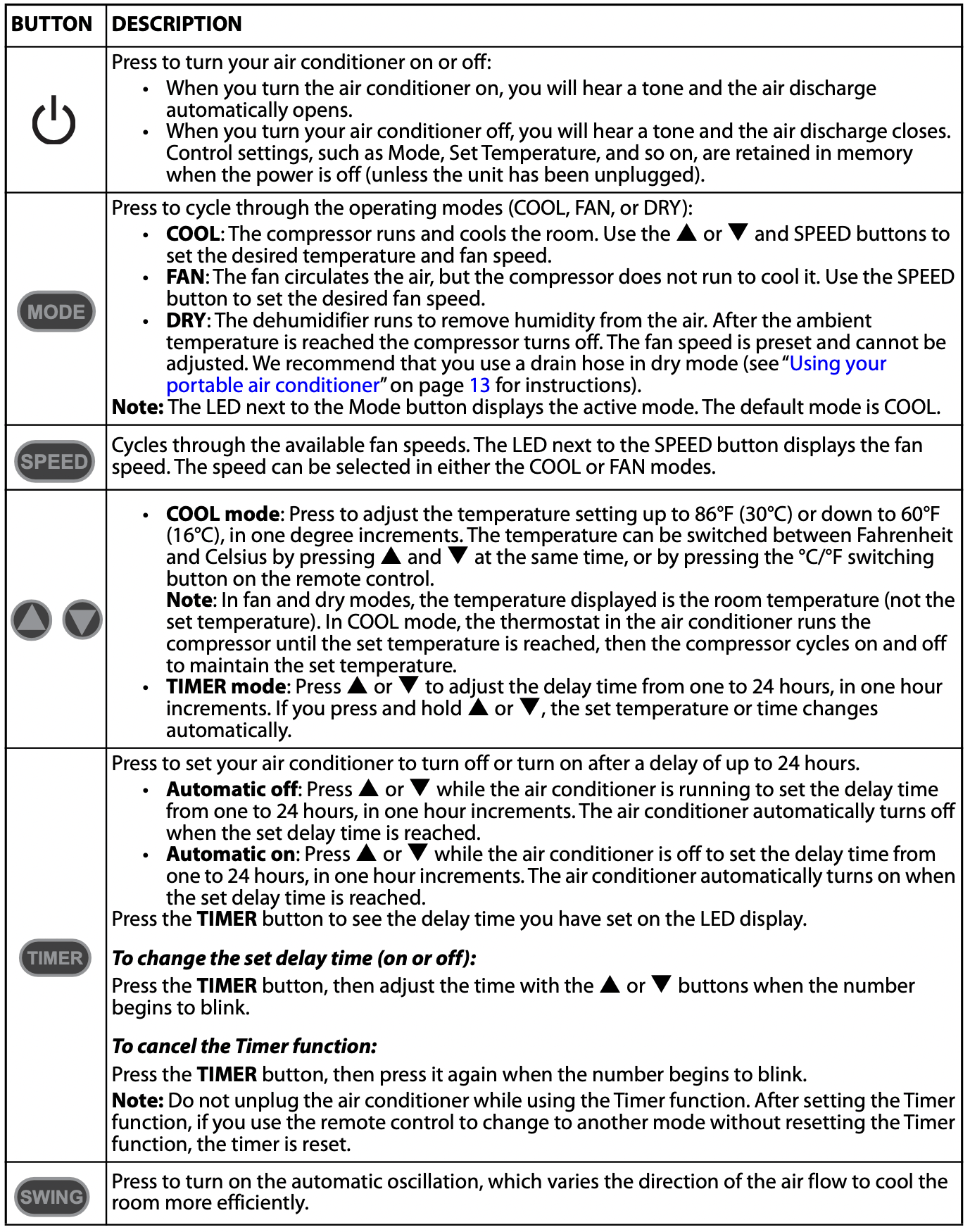
Cleaning and maintaining your air conditioner
Your air conditioner is designed for year-round use with only minimal cleaning and maintenance.
For maximum efficiency, we recommend that you have the cooling coils inspected and cleaned annually by a professional technician.
Warning:
- Unplug the air conditioner before cleaning or performing any maintenance or service.
- Be careful when cleaning coils or removing or reinstalling the filter. The cooling fins are very sharp.
- Failure to follow the above precautions could result in electric shock or personal injury.
Cleaning the case
- Wipe the case with a slightly damp cloth, then wipe dry with a dry cloth.
Caution:
To prevent damage to the finish, do not use:
- Gasoline, benzine, thinner, or other similar solvents.
- Abrasive cleaners.
Never pour water onto or into the air conditioner. It could damage the internal components and create a shock or fire hazard.
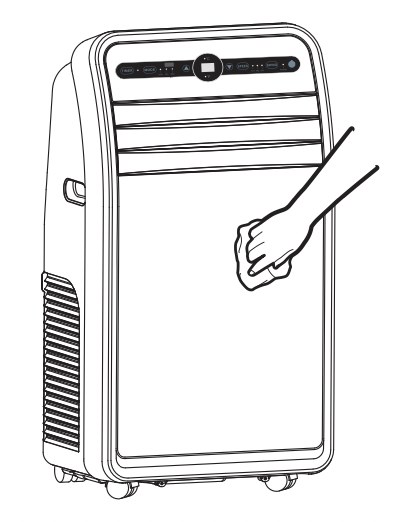
Cleaning the air filter
The air filter should be cleaned every two weeks. Depending on indoor air quality, the filter may require cleaning more often. A dirty air filter decreases the airflow and reduces the efficiency of the air conditioner.
Do not operate the air conditioner without the air filter in place.
- Lift the air filter out by the handle.
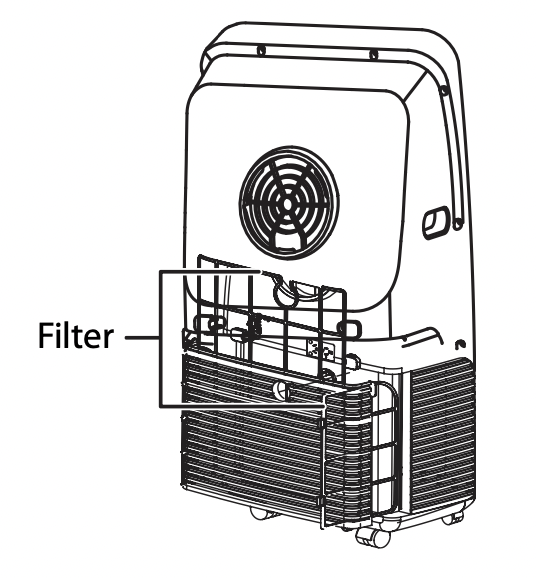
- Clean the filter with a vacuum cleaner. If the filter is very dirty, it can be washed by hand in warm water with a mild detergent.
Cautions:
Do not use harsh cleaners or very hot water.
Do not wash in a dishwasher or washing machine. - Let the filter dry completely, then reinstall it in the air conditioner.
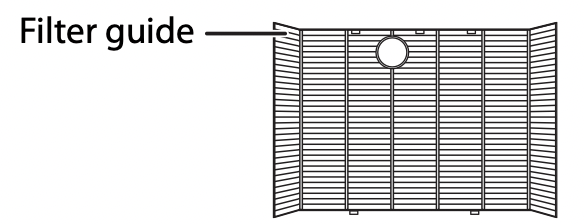
Note: When the filter is not replaced in the air conditioner correctly, there is a gap between the filter case and the unit.
Emptying the water collection tank
When the internal water collection tank is full, “FL” appears on the LED display and your air conditioner turns off until the tank is emptied.
Notes:
- When operating or draining water from your air conditioner, always protect carpeting and floors from possible water spillage.
- When you drain the water from your air conditioner, be sure to wipe up any spilled water with a dry cloth or towel.
Manually drain water
- Unplug your air conditioner, then disconnect the exhaust hose from the back.
- Move your air conditioner to a location where a suitable drain is available or place a drain pan under the unit that is capable of holding up to 1.37 pints (0.65 liters) of water.

- Remove the rubber plug from the drain outlet and insert a syphon hose (not included) into the opening.
- Syphon the water from your air conditioner.
- After you have drained the water collection tank, replace the rubber plug, making sure that the bolt is secure.
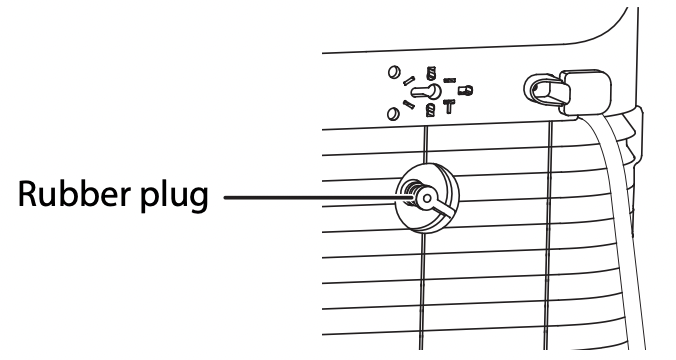
- Place the air conditioner in the desired location, reconnect the exhaust hose, then plug it in. When the air conditioner is restarted after being drained, it automatically starts in COOL mode with a temperature setting of 72°F.
Automatically drain water with a hose
Note: Drain your dehumidifer manually before connecting a drain hose. See “Manually drain water” on page 16.
- Unplug your air conditioner and move it to a location where you can work on it.
- Remove the rubber plug from the unit.

- Remove the filter case.
- Install a 0.47 in. (12 mm) inside diameter drain hose (not provided) on the back of the unit where you removed the water plug. Use a hose clamp (not provided) to make sure that there are no leaks.
- Replace the filter case.
- Place the open end of the hose in a suitable location to drain continuously.
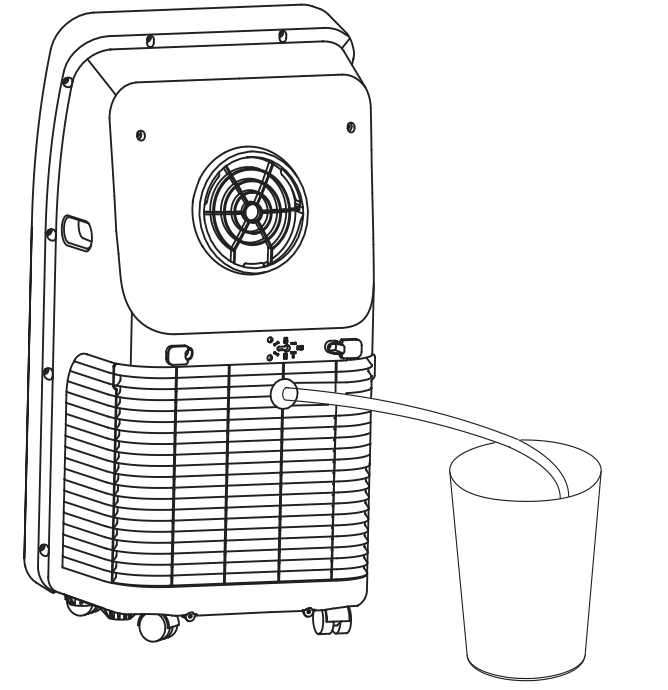
- Plug in your air conditioner and restart it.
- Set your air conditioner to DRY mode using either the remote control or the control panel.
Storing your air conditioner
If your air conditioner will not be used for an extended period of time, we suggest that you prepare it for storage by doing the following:
- Unplug your air conditioner.
- Remove the rubber plug and drain the water collection tank completely.
- Reinstall the rubber plug.
- Remove the filter case and clean the filter. Allow it to dry completely, then reinstall it.
- Remove the batteries from the remote control.
- Store the air conditioner in a cool, dry place, away from direct sunlight, extreme temperatures, and excessive dust.
Restarting your air conditioner after storage
- Make sure that the filter case and rubber plug are in place.
- Make sure that the power cord and plug are in good condition.
- Install new AAA batteries in the remote control.
- Move the air conditioner to the location where you plan to use it and reconnect the exhaust hose and electrical plug.
- Restart your air conditioner and make sure that everything runs smoothly.
Troubleshooting
Caution: Do not try to repair your portable air conditioner yourself. Doing so invalidates the warranty.
PROBLEM | POSSIBLE CAUSE | POSSIBLE SOLUTION |
| Air conditioner does not start | The air conditioner is unplugged. | Make sure that the air conditioner is plugged in and that the plug is pushed completely into the outlet. |
| The fuse on the circuit is blown or the circuit breaker is tripped. | Check the house fuse/circuit breaker box and replace the fuse or reset the circuit breaker. | |
| Power failure. | If a power failure occurs, the air conditioner turns off. When the power is restored, wait three minutes to restart the air conditioner to prevent tripping the compressor overload. | |
| The current interrupter device in the power cord has tripped. | Press the RESET button located on the power cord plug. If the RESET button will not stay engaged, discontinue use of the air conditioner and contact a qualified service technician. | |
| FL appears on the display. | The water collection tank is full and must be drained. Drain the tank and reset your settings. See “Emptying the water collection tank“ on page 16. | |
| Room temperature is less than the set temperature. | This is normal. The air conditioner automatically shuts off when the room temperature equals, or is less than, the set temperature. Adjust the temperature setting, if needed. | |
| The air conditioner does not cool | Airflow is restricted. | Make sure that there are no curtains, blinds, or furniture blocking the front of the air conditioner. |
| The temperature control may not be set correctly | In COOL mode, decrease the temperature setting by pressing the  button on the panel or the remote control. button on the panel or the remote control. | |
| The air filter is dirty. | Clean the filter at lease every two weeks. See “Cleaning and maintaining your air conditioner” on page 15. | |
| The room may have been hot. | You need to allow time for the room to cool down after you first turn on the air conditioner. | |
| The exhaust hose is not connected or is blocked. | Connect the exhaust hose and make sure that it is not obstructed and is functioning properly. | |
| The air conditioner is freezing up | The cooling coils are iced over. | Ice may block the air flow and obstruct the air conditioner from properly cooling the room. Set the mode control to High Fan or High Cool. |
| The air conditioner runs too often or too long | The area to be cooled is too large for the air conditioner. | Contact Insignia Customer Care for the air conditioner capacity required to cool the desired area. |
| Doors or windows are open. | Make sure that doors and windows are closed. | |
| The venting hose is hot | When the air conditioner runs continuously for a long time, the hose becomes hot. | This is normal. |
| The air conditioner is too loud | The unit may seem rather loud for the first two or three minutes of operation. | This is the sound of the compressor starting up and is normal. |
| A soft, swishing noise can be heard immediately after turning the unit on or off, and during operation. | This is the sound of the liquid refrigerant flowing in the unit and is normal. | |
| The air conditioner makes an odd noise | An audible gurgling noise may be heard when the unit is operated on a gently sloping floor. | Place the unit on a level floor. |
Intelligent error indication
If an E1, E2, or E4 error appears on the LED display, turn off your air conditioner and call a professional maintenance technician or service center.
ERROR CODE | DESCRIPTION |
E1 | Coil temperature sensor error. |
E2 | Indoor temperature sensor error. |
E4 | Anti-freezing protection. The air conditioner coil temperature is too low and the unit has turned off automatically. The unit resets itself when the temperature reaches 46.4°F (8°C). |
FL | The internal water tank is full and needs to be emptied. |
See other models: NS-MC60SS9 NS-SB316 NS-28E200NA14 NS-CT1DC8 NS-32D200NA14
